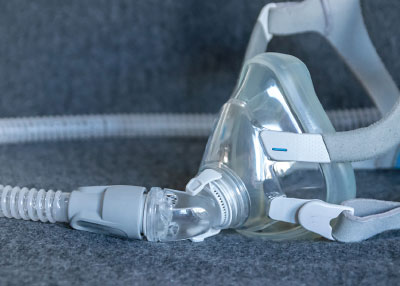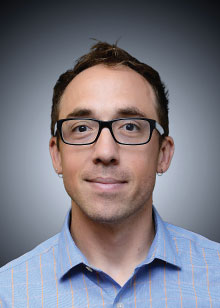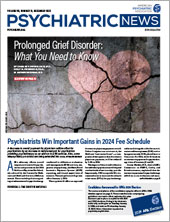It is well-known that people living with posttraumatic stress disorder (PTSD) are often troubled by nightmares and insomnia, but there is growing recognition that sleep disturbances do not stop there. High rates of individuals with PTSD may also have obstructive sleep apnea—a condition when breathing repeatedly stops and starts during sleep, resulting in heavily fragmented sleep.
Untreated sleep apnea can interfere with many aspects of PTSD management, Peter Colvonen, Ph.D., an associate clinical professor of psychiatry at the University of California, San Diego, told Psychiatric News. Colvonen is a researcher at the San Diego VA Health Care System.
“Fragmented sleep takes a much heavier toll on cognition than just poor sleep,” Colvonen explained. “If you are not sleeping, you are not processing what you have just learned.”
The result is that individuals with PTSD and untreated sleep apnea show far less response to an effective intervention such as
prolonged exposure therapy compared with those without sleep apnea or with treated sleep apnea. Similarly, untreated sleep apnea has been shown to interfere with
medication response in people with PTSD. “We don’t see such an interference for patients with comorbid insomnia or nightmares,” he said
As Colvonen explained, the classic risk factors for sleep apnea are older age, overweight/obesity, hypertension, and thick neck circumference—all physical factors that might impact air flow during sleep. Yet at his VA clinic and others, he said that therapists are seeing fit,
young veterans screen positive for sleep apnea—some even with severe cases. There’s no definitive explanation to account for this elevated rate of sleep apnea, but Colvonen suggested it may arise from extended periods of sleep deprivation experienced by troops in combat areas coupled with a hypervigilant brain not allowing a restful sleep.
“[T]he majority of these military personnel with sleep apnea do not display the telltale predictors of this disorder,” making diagnosis using
standard paper and pencil questionnaires difficult, Colvonen said.
“I’m fortunate to work at an integrated care center, so I just refer 100% of the people who come to me with PTSD to our VA sleep lab,” he said.
Colvonen acknowledged that many mental health professionals may not be able to send patients with PTSD for an overnight visit to a sleep lab, but he added that there are affordable take-home sleep apnea tests available to buy or rent (for instance, the NOX-T3 monitor or the wristworn watchPAT) that could be loaned out to patients.
Once sleep apnea is diagnosed, the condition can be effectively managed with a CPAP (continuous positive airway pressure) machine. However, many people with PTSD have problems wearing these devices, he said.
“There’s no way around it. These devices are uncomfortable and can instill feelings of claustrophobia,” he said. He recommended that psychiatrists work with patients to slowly introduce use of the CPAP machine.
At his VA practice, Colvonen leads a six-week CPAP adherence class where he gradually desensitizes users to the device; first they wear the device with no air pressure during the day, then in bed at night. Then, slowly the pressure is ramped up. Individuals are also taught relaxation techniques to combat claustrophobia.
What’s critical is to check in on patients regularly in the early days of CPAP usage, Colvonen said. “Many sleep clinics will give someone the device and then check in three months later, at which point the individual has already gotten frustrated and stopped using it.”
Though Colvonen focuses on the military and veterans in his work, he believes that mental health professionals treating civilians would also benefit from being on the lookout for sleep apnea in patients with PTSD.
“I think anyone who is exposed to a heightened sense of threat over long periods of time might be at elevated risk of sleep apnea,” he said. “The military comes to mind first, but first responders like police and firefighters could be another group where sleep apnea rates are high.” ■


